This forum is now read-only
To login to the new support channel and community forums, go to the Support Portal
Tonino device to analyze the roast of your beans
(also available on my blog)
The Tonino arrived. It's a new tool for coffee roasters to measure the color & darkness of their roast, but could also be used by people who buy beans roasted and want to know more about the depth of the roast.
Previously, such devices were very expensive (3000--15000 Euros) and only industrial roasters could afford to have them around. Roasters who couldn't afford the real thing, could settle for tiles in several colors representing values on the standard scale, so they could compare their beans during or after a roast to see how far they were off from their target coloring.
We are not schooled in cupping so if we want to know how our roast profile has done as soon as possible after a roast, Tonino is a very powerful tool. It gives exact numbers from a calibrated device.
The color example below is an alternative, but one never knows on what screen the designer made this chart, how it was calibrated, where he scanned the original color tiles from, on what medium, so it all remains guesswork and nothing to be communicated in a very meaningful way.
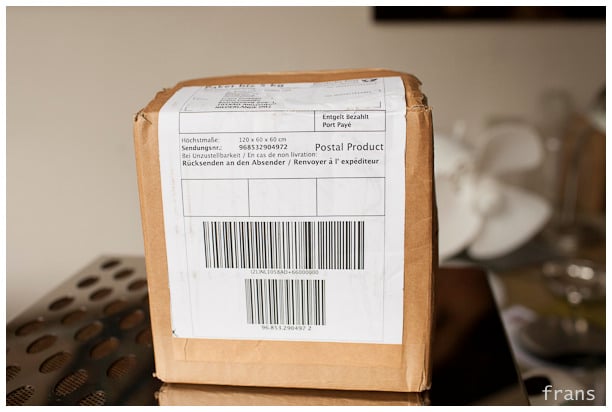
Measuring roast color of ground coffee beans tells you more than just measuring the outside, because like a slab of beef can be roasted dark on the outside while being red inside, beans can be more deeply roasted or more superficially colored than you would guess on first sight.
Now, two guys in Germany have produced a small series of a roast color analyzer that is at least as exact at a fraction of the cost. Plus, their best customers donate 10% of the price to CoffeeKids, an initiative to help children in coffee producing countries. See their web site: my-tonino.com
I have unpacked the Tonino, calibrated it (very simple) and used it to compare two very different roasts. One light espresso roast of an Ethiopian coffee roasted on our modified Roastilino and one handful that a friend gave me which has come of his Gene roaster so dark it was almost charred.
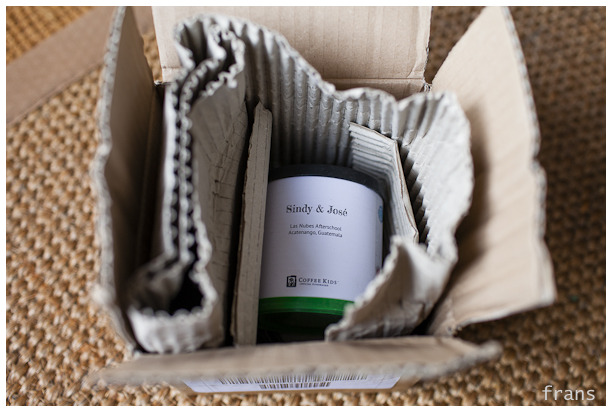
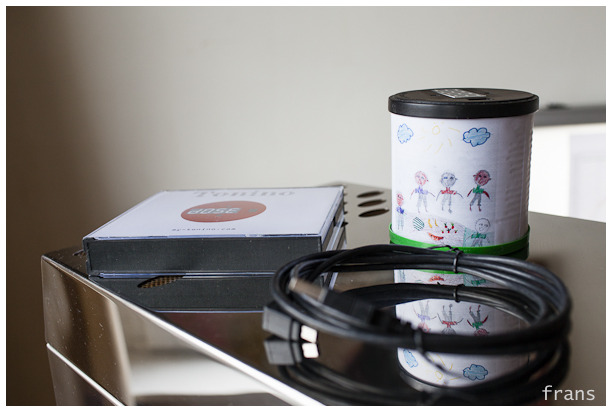
The drawing on the outside of the Tonino was made by Sindy & José, two children from Guatemala supported by CoffeeKids at the Las Nubes Afterschool and Learning Center ADESPA.
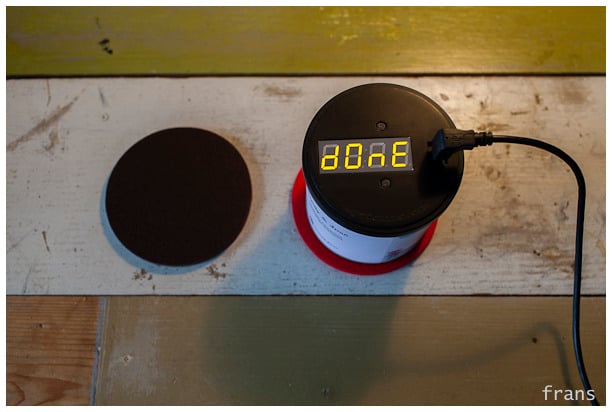
Box with manual and calibration pads, hand decorated Tonino, USB cable
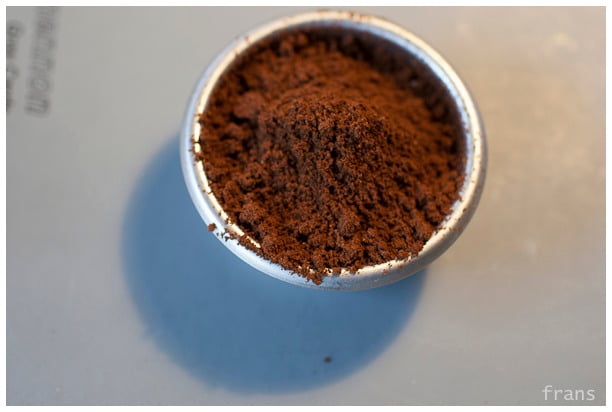
Calibration: put Tonino on brown pad, then on red one, "done"!

Ground 17g of Ethiopia Cherry Red
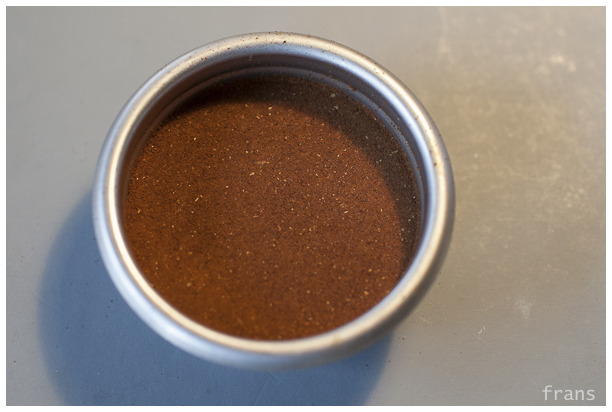
Tamped grinds, grey card, roast profile
(more in next message, maxnumber of illustrations reached)
The Tonino arrived. It's a new tool for coffee roasters to measure the color & darkness of their roast, but could also be used by people who buy beans roasted and want to know more about the depth of the roast.
Previously, such devices were very expensive (3000--15000 Euros) and only industrial roasters could afford to have them around. Roasters who couldn't afford the real thing, could settle for tiles in several colors representing values on the standard scale, so they could compare their beans during or after a roast to see how far they were off from their target coloring.
We are not schooled in cupping so if we want to know how our roast profile has done as soon as possible after a roast, Tonino is a very powerful tool. It gives exact numbers from a calibrated device.
The color example below is an alternative, but one never knows on what screen the designer made this chart, how it was calibrated, where he scanned the original color tiles from, on what medium, so it all remains guesswork and nothing to be communicated in a very meaningful way.

Measuring roast color of ground coffee beans tells you more than just measuring the outside, because like a slab of beef can be roasted dark on the outside while being red inside, beans can be more deeply roasted or more superficially colored than you would guess on first sight.
Now, two guys in Germany have produced a small series of a roast color analyzer that is at least as exact at a fraction of the cost. Plus, their best customers donate 10% of the price to CoffeeKids, an initiative to help children in coffee producing countries. See their web site: my-tonino.com
I have unpacked the Tonino, calibrated it (very simple) and used it to compare two very different roasts. One light espresso roast of an Ethiopian coffee roasted on our modified Roastilino and one handful that a friend gave me which has come of his Gene roaster so dark it was almost charred.


The drawing on the outside of the Tonino was made by Sindy & José, two children from Guatemala supported by CoffeeKids at the Las Nubes Afterschool and Learning Center ADESPA.

Box with manual and calibration pads, hand decorated Tonino, USB cable

Calibration: put Tonino on brown pad, then on red one, "done"!

Ground 17g of Ethiopia Cherry Red

Tamped grinds, grey card, roast profile
(more in next message, maxnumber of illustrations reached)




Comments
Ready for Tonino
Tonino's "eyes" resting on the coffee grinds
Measurement ready: roast value 91. That's a light espresso roast. Espresso is around 80, filter around 110, Nordic ultra light around 120. Charcoal Blackness would be around 60.
(that's on the Tonino scale)
Proof of the pudding: espresso from this roast on the LONDINIUM
A fruity delightful cup
Now, on to the Very Dark Beans. They are actually darker than you see on the picture below, gloomy dark, oozing oil. Beans from Hell, sticky and smelling sharply like goat dung.
Beans from Hell
Roast from Hell: 36 on the Tonino scale. Alert the health authorities!
The dark roast on the left, the Ethiopian on the right, on grey card. With the naked eye you wouldn't immediately spot the dramatic difference between playful light Ethiopian beans and the lethal beans that could kill ya.
(more next msg)
Espresso from Dark Matter. Flow very fast, an ashen brew with specks of soot
The Tonino app on the desk top
This Tonino will allow us to evaluate a roast quickly after the roast is done, without having to wait several days for the beans to rest and breathe. Will be interesting to learn more!
Using the app, I have loaded an Agtron Commercial scale into the Tonino device, so I can approximate measurements as if they were made on the device of the very expensive market leader:
Other scales are those emulating Neotec ColorTest, Probat Colorette, Agtron Gourmet and ColorTest. The values then approximate those standard scales but in a lab / industrial application it would be best to also take a few samples on both devices to enable the Tonino to get finetuned. For us, it seems enough to be able to communicate values that are meaningful to people familiar with Agtron readings or Agtron tiles, while within our own little roastery we will be consistent as long as we keep the Tonino tuned to this current scale.
Using the Agtron scale enables us also to use other pages as a reference, such as
http://c3aflavorexperience.blogspot.de/2012/11/roasting-scale.html
Where we find this helpful chart. These charts are of course drawn up for people who could only wish to have a device showing Agtron compatible readings. They would use it to get an estimate of what an Agtron reading would be, we can see where our roasted beans reside in the roast spectrum on the lists and this knowledge, combined with tasting later, can help us refine the roast profiles or detect where we went astray.
just got one - and was wondering what the best scale would b...
thanx best christian
Gesendet von meinem F5321 mit Tapatalk
I always use the default Tonino scale for the device. Several fellow roasters do too, and every now and then we also measure each other's beans so we gauge for instance that Tije, when he measures the exact same beans, using his grinder, his grinding settings, his tamping force, gets 3-5 Tonino points higher numbers than I.
I usually aim for Tonino #95, knowing that #100 will also work well, #103 would not work for customers with cheaper grinder/machines, and #90 will also be fine and #85 would be good too, even though I would begin to miss some subtleties and a few friends actually prefer these darker ones that I will not aim for even if they'd like me to.
again interesting input
- so the interrater reliability is 3-5 points
do you know of a diagramm similar to the one you published for the agtron scale for the tonino scale? i did not find anything through google
like:
half city
cinnamon
city
full city
full city+
vienna
italian
french
spanish
good evening christian
The meaning of those terms change depending on where you live and even one roaster could call something "vienna" where another nearby would call it "italian" and no way to check who is 'right' -- with such words, it's helpful if you know the person who uses the term so you understand what he means.
That's why it's so good to have a more exact instrument to actually measure, instead of holding beans in your hand, in the evening light and calling it one of the above names.
The difference of 1-5 Tonino values may be very hard to see with your eyes and the difference in lighting, time of day may be more of influence to your eyes than the grinds if you want to gauge it with your eyes instead of an instrument.
Remember that the same roast color that you got from a normal roast duration and development time can be reached by a fast less developed roast to a higher temp. So the color is just one check point.
It always helps to consider what exactly you are measuring, what other roast data (moisture, roast profile, room temperature, air moisture, time spent after FC until DROP) you are recording and comparing. Besides measuring and recording, time spent thinking about these can improve your understanding and get you to better quality coffee.
there are many ways to tonino color measurement - and at the end the route taken is as important than the final color score.
i am not sure if this is the right forum for roast questions like that...
but here it seems to me especially you and Reiss are willing to really share your collected knowledge and wisdom - in a concise and fact based opinion that as a newbie is understandable and brings deeper understanding - not many people do that
i like your aproach to roast and coffee questions a lot!
i have seen that you are co-organizing a Artisan software meeting on Fr. 22.6, 19:30 during the SCA World of Coffee 2018 Amsterdam: i am too new to all that to participate; just a idea i was wondering while doing my first roasts - would it make sense to - record sounds made by the beans while roasting and display the information graphicaly in artisan? it seems to me that sound is probably not as studied as one could scientificaly and nevertheless we make our decisions on it.
cheers christian
100-115 Light (AgtronGour 80-95)
90-100 City (AgtronGour 70-80)
80-90 Medium (AgtronGour 60-70)
70-80 Full City (AgtronGour 50-60)
60-70 Dark (AgtronGour 40-50)
<60 Heavy (AgtronGour <40)